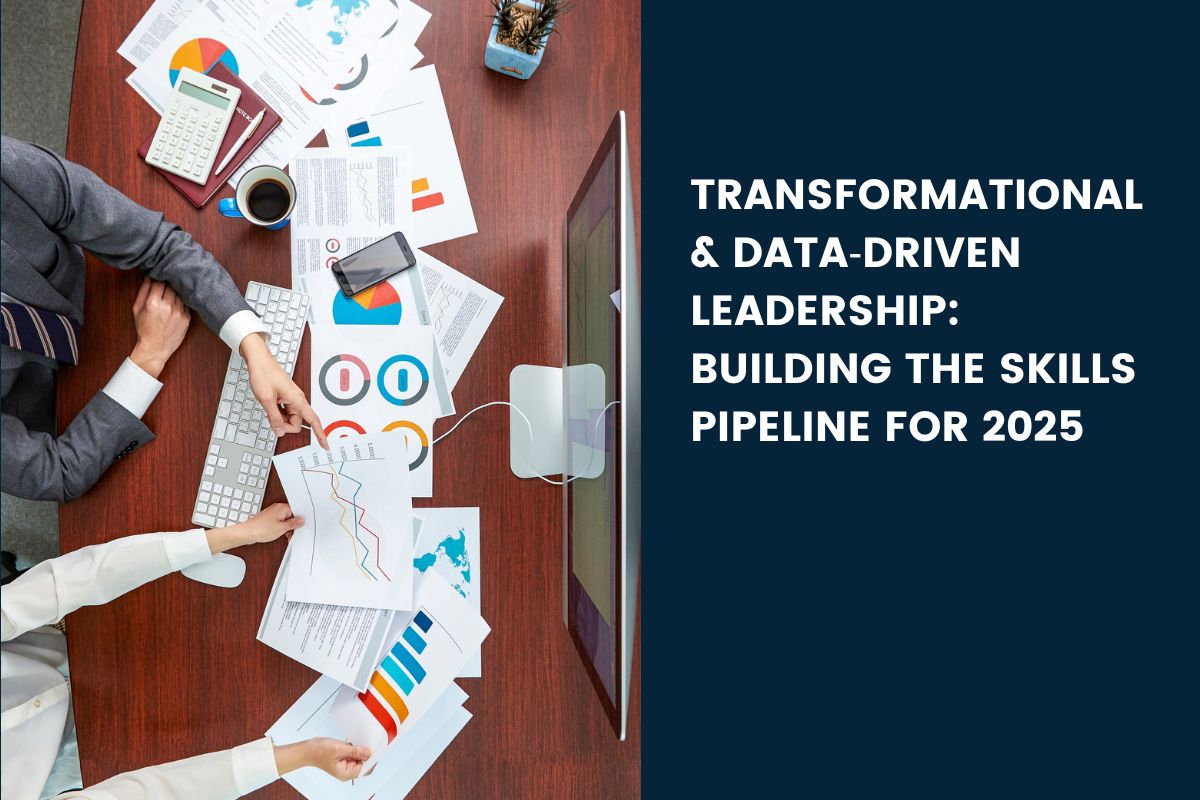Why leadership models are changing
Several trends are reshaping expectations of senior leaders. The rise of technology, remote and hybrid work, stakeholder capitalism and heightened scrutiny of corporate ethics have altered how success is defined. According to SG Analytics, transformational leadership emphasises visionary thinking, power sharing and innovation. Leaders who embrace this style articulate a compelling mission and empower their teams to co‑create solutions. At the same time, data‑driven decision making allows executives to ground strategic choices in analytics and predictive insights. Emotional intelligence – the capacity to understand and manage one’s own emotions and those of others – is increasingly valued, enabling leaders to communicate effectively and resolve conflict. Sustainable and ethical leadership further demands a long‑term perspective, balancing financial results with environmental and social responsibilities. In hybrid environments, flexibility and connection are critical.
Implications for boards and executives
Boards and nomination committees now seek directors and executives with a blend of visionary, analytical and human‑centric skills. OnBoard’s corporate board recruiting trends report notes that many organisations are building long‑term succession pipelines and opening opportunities for younger and first‑time directors. These pipelines are particularly important as the pace of digital transformation accelerates and retirements create leadership gaps. Companies that cultivate a diverse bench of potential leaders can respond more quickly to disruption, while those that neglect pipeline development risk losing momentum.
Transformational leadership: vision, power sharing and innovation
Transformational leaders inspire people to look beyond short‑term tasks and align around a shared vision. They articulate a clear purpose, model the behaviours they want to see and encourage creative problem solving. Research underscores several hallmarks of transformational leadership:
- Vision and purpose: Leaders must communicate a meaningful mission that resonates with employees and stakeholders. This vision should reflect the organisation’s values and strategic goals.
- Empowerment: Rather than directing every move, transformational leaders invite input, delegate authority and trust their teams to execute. Power sharing fosters ownership and innovation.
- Innovation and risk‑taking: Encouraging experimentation and learning from failure allows organisations to adapt and thrive. Leaders should reward creativity and recognise that transformation requires calculated risks.
Transformational leadership is particularly effective in today’s context of rapid change. With technology disrupting industries and stakeholder expectations shifting, leaders must catalyse change, build resilient cultures and inspire continuous improvement.
Data‑driven leadership: analytics and predictive decision‑making
Data‑driven leadership complements the visionary focus of transformation by grounding decisions in evidence. Executives use analytics to identify patterns, model scenarios and anticipate risks. SG Analytics highlights that data‑driven leaders incorporate real‑time information, predictive modelling and data visualisation into their decision processes.
Key practices include:
- Establishing data governance: Ensure data quality, consistency and accessibility across the organisation. Implement robust governance frameworks to manage privacy, security and ethical use.
- Cultivating analytics capabilities: Invest in analytics tools and teams that can translate raw data into actionable insights. Leaders themselves must understand the fundamentals of data analysis to ask the right questions and interpret results.
- Integrating qualitative judgment: Numbers alone do not dictate strategy; effective leaders combine data insights with experience, stakeholder input and organisational values.
In the context of boardrooms, data‑driven leadership also relates to the adoption of governance technology platforms that improve oversight and transparency. Diligent’s 2025 trends report notes that AI‑powered governance platforms are becoming a differentiator, with organisations that embrace them gaining speed and agility. However, data must be interpreted responsibly; generative AI and analytics tools should augment, not replace, human judgment.
Emotional intelligence: empathy, communication and conflict resolution
Technical skills and strategic acumen are no longer enough. Emotional intelligence enables leaders to build trust, motivate teams and navigate complex stakeholder relationships. SG Analytics emphasises that leaders with high emotional intelligence excel at communication, empathy and conflict management.
Practical ways to develop emotional intelligence include:
- Self‑awareness: Reflect on personal triggers, strengths and biases. Seek feedback from peers and mentors.
- Active listening: Listen for understanding rather than simply waiting to respond. Acknowledge different perspectives and emotions.
- Empathy: Consider how decisions affect employees, customers and communities. Recognise and validate others’ experiences.
- Constructive feedback: Provide clear, respectful feedback that focuses on behaviours and outcomes rather than personal traits.
Emotional intelligence is a cornerstone of inclusive leadership. In hybrid and remote environments, where communication is often digital, leaders must work harder to ensure team members feel heard and supported. According to the Global Wellness Institute, wellbeing intelligence – the ability to integrate wellbeing into decision making – is emerging as a critical leadership competency. By balancing empathy with data‑driven insights, executives can foster cultures where people thrive.
Sustainable and ethical leadership: balancing short‑ and long‑term goals
The importance of ethical leadership has grown as stakeholders demand greater transparency, accountability and social responsibility. Businesses with strong ethical cultures outperform peers by up to 40 percent.
Ethical leadership encompasses:
- Long‑term value creation: Prioritise sustainable growth over short‑term gains. Consider environmental and social impacts alongside financial metrics.
- Transparency: Communicate openly about decisions, risks and challenges. Transparency builds trust among investors, employees and communities.
- Fairness and inclusion: Embed diversity, equity and inclusion into recruitment, promotion and everyday interactions.
- Governance: Establish clear policies to manage conflicts of interest, safeguard data and prevent misconduct. Boards should regularly review ethical frameworks to ensure they remain fit for purpose.
In the age of generative AI, ethical considerations extend to algorithmic bias, privacy and the responsible use of technology. Boards must ensure that AI tools do not perpetuate discrimination and that human oversight remains central. Ethical leadership also underpins employer branding; job seekers increasingly evaluate organisations based on their values and social impact.
Leading in hybrid and remote environments
Hybrid work arrangements are here to stay, requiring leaders to adapt their communication and management styles. Effective hybrid leadership hinges on flexibility, clear expectations and intentional relationship building. SG Analytics notes that remote and hybrid leadership skills – such as digital literacy, trust building and performance measurement – are critical for success.
Leaders should:
- Set clear goals and outcomes: Focus on objectives rather than hours spent online. Provide guidance and remove obstacles without micromanaging.
- Use technology to connect: Leverage collaboration tools to support teamwork and information sharing.
- Promote inclusion: Ensure that remote employees have equal access to opportunities, information and recognition.
- Encourage wellbeing: Recognise that working across locations can blur boundaries; model healthy work habits and foster social connection.
Hybrid work further emphasises the need for adaptability in leadership pipelines. Candidates should be evaluated on their ability to lead distributed teams, navigate ambiguity and maintain culture across platforms.
Building a skills pipeline for executive leadership
Building a robust leadership pipeline ensures organisations are prepared for future challenges. OnBoard’s research highlights the importance of cultivating long‑term succession pipelines and inviting younger or first‑time directors onto boards. To build a pipeline that aligns with transformational and data‑driven leadership, organisations can:
- Identify future needs: Assess strategic objectives, industry trends and emerging risks to determine the competencies required in three to five years. Balance technical expertise with soft skills such as empathy and adaptability.
- Map internal talent: Conduct talent reviews to identify high‑potential leaders across functions. Evaluate not only performance but also learning agility, cultural alignment and diversity.
- Develop cross‑functional experience: Rotate high‑potentials through different roles, enabling them to understand the business holistically and build networks.
- Invest in development: Provide targeted coaching, mentoring and education to build transformational, data‑driven and ethical leadership capabilities. Executive coaching has been shown to increase performance by up to 70 percent.
- Leverage interim leadership: Interim executives can bridge gaps during transformations or unexpected vacancies. They bring specialised skills and can mentor emerging leaders while the organisation conducts a thorough search.
- Measure progress: Set metrics for pipeline diversity, readiness and retention. Regularly report to the board on succession planning and adjust strategies as needed.
Working with a search partner such as Galvin‑Rowley Executive can accelerate pipeline development. Our executive search and board search services connect organisations with leaders who combine visionary thinking, data literacy and emotional intelligence. We also provide interim leadership and career coaching to support individuals and teams during transitions.




